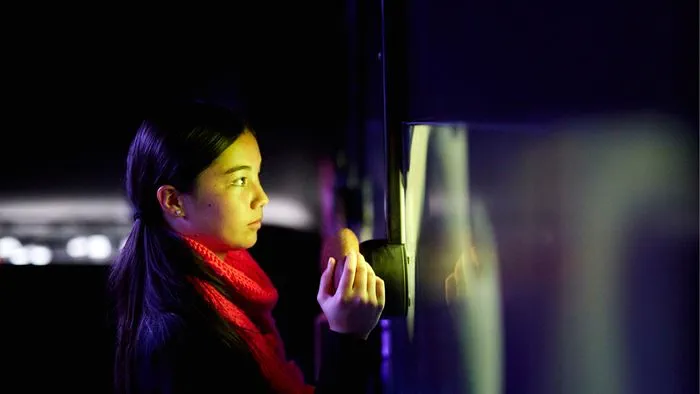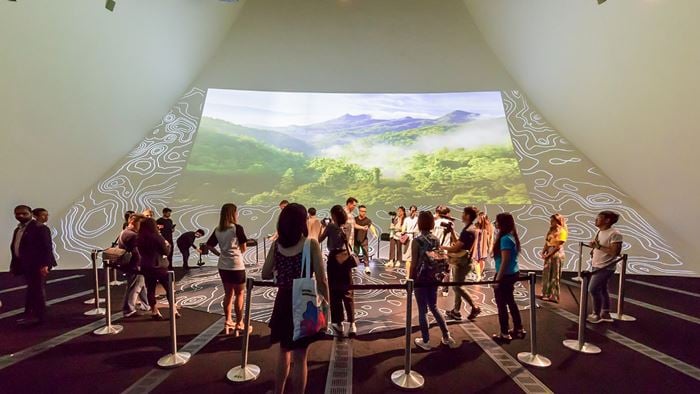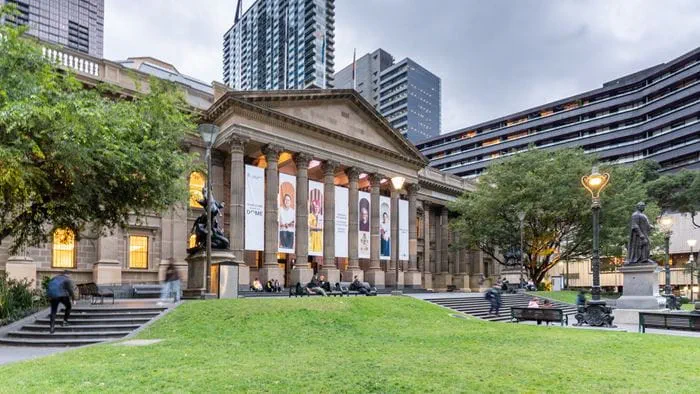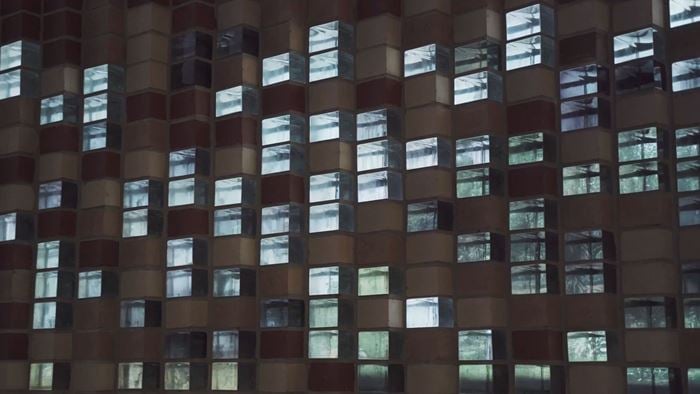Our acoustic team has a long history of working with ACMI (Australian Centre for the Moving Image), having worked with the national institution on its base build, fitout, exhibition designs, as well as specific acoustic investigations.
As part of ACMI’s Renewal Project we were appointed to provide specialist lighting, acoustics and AV design to support the exhibition and experience design team, Razorfish (formerly Second Story).
Key to the redevelopment was a new centrepiece exhibition, The Story of the Moving Image – which takes audiences on an immersive journey into the past, present and future of the moving image through five galleries of displays, experiences and objects.
High-impact lighting, AV and sound were key to the success of this exhibition. Our teams led the project’s lighting control, casework lighting design and integration, production of installation documents, commissioning and the layering and integration of these services into the display objects in a way that would enhance visitors’ connection to each element.
With no daylight in the space, we created an overhead track lighting array, layered on an in-floor strip lighting system to lead the visitor through the exhibition. The guiding light begins in red, representing the original darkroom method of photography, before morphing into a white grid, representing the story of photos developing into moving image. Finally, the concluding stretch of light represents the rise of video and new media – represented by a string of double-sided, colour changing lights.
Project Summary
110+speakers
20+DMX Universes of Lighting control
5immersive galleries to explore
Inspiring memory through sound and light
Soundscape audio and symbolic light were incorporated into the exhibition to create an additional layer to the displays, used as a catalyst to help trigger visitors’ nostalgia. At the exhibition entrance, visitors encounter the earliest, most elemental form of moving image: light and shadow. They are prompted to retrieve a ‘magic lens’, which they can use inside the galleries to collect – and later explore – objects and media that interest them. Light was used to balance the environment as to not overpower the internal lighting from the magic lens and the indigenous artwork suspended above.
In Memory Gardens, the sounds of projection equipment compel the viewer to reflect on their early experiences with video and photographs, while within the games lab, lighting that reflects the colour palettes of original arcade games triggers visitors’ childhood memories surrounding those games.
The highly digital nature of the sound system design allowed us to facilitate the audio journey throughout the permanent exhibition. The Dante-managed network of loudspeakers was designed with the flexibility to assign audio content and adapt volume and equalisation of each speaker output individually. This allowed the acoustics and AV team to balance the underlying ambient soundscape with building services noise, along with the highly varied speech and music content of the numerous core areas.
The team’s ability to be on-site and experience the space whilst tweaking the lighting and audio in real-time was key to achieving an immersive and vibrant aural experience for ACMI’s visitors.
Image © ACMI, Story of the Moving Image, 2021 Shannon McGrath
“The Story of the Moving Image was a very complex project. An abundance of moving image and digital interactives combined with hundreds of historical objects and archival material to make up the exhibition. Key to making the exhibition’s beautiful design by Razorfish and BK Studio was precise and sophisticatedly realised lighting and audio, realised through functional and flexible control systems.
Despite the challenges that Covid-19 brought to the project, Arup’s team delivered in spades. With our key designers unavailable to get to Melbourne, Arup really stepped into the breach, and the final layer of audio and lighting system install, focus and fine tuning that Arup provided the exhibition has really made it sing. ACMI is really grateful for the contribution of the Arup team, who were collaborative and a real asset to the project. ” Chris Harris Director of Exhibitions and Touring, ACMI
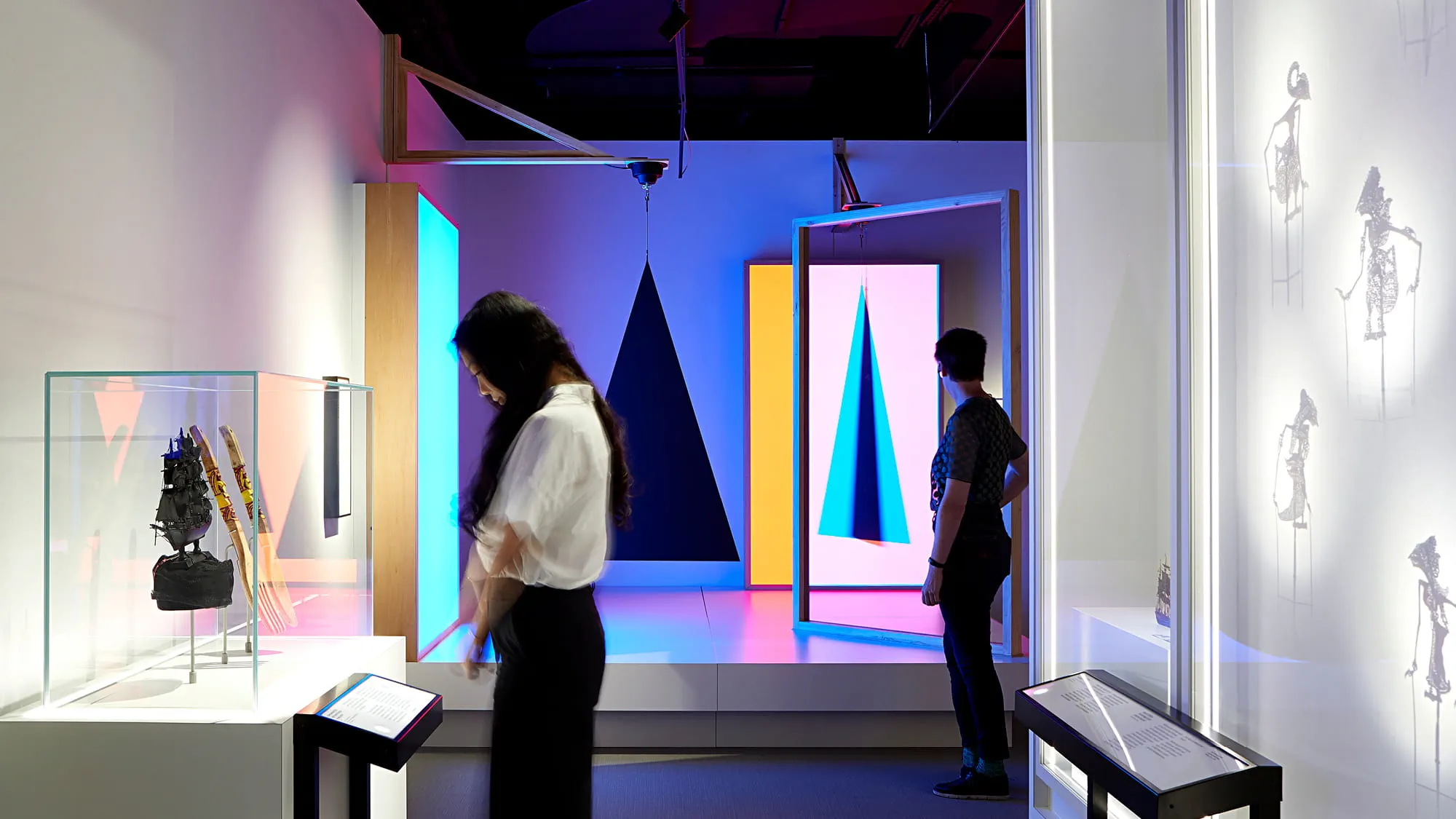 ;
;







